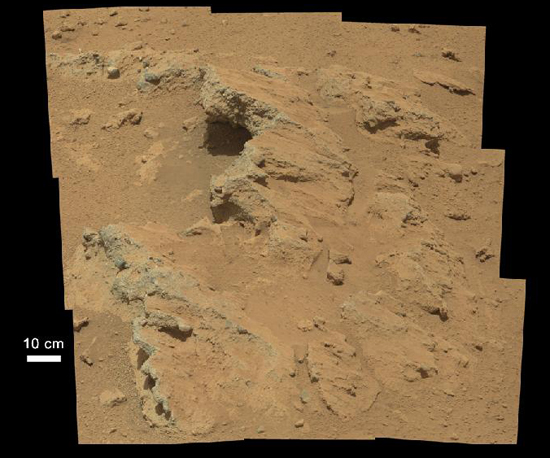NASA’s Curiosity Rover Discovers Ancient Streambed on Mars
NASA’s Curiosity rover is traversing its way to Mount Sharp on the Martian surface, but that doesn’t mean it’s not going to fully exploit the potential scientific discoveries all around on its way there. In fact, NASA’s just revealed that the rover’s discovered evidence of an old streambed. There’s been other evidence pointing to the previous existence of water on Mars, but Curiosity’s captured images of ancient gravels that formed due to a streambed, which has never been done before.
Even better than merely capturing images of the gravel, NASA scientists can extrapolate the speed and distance of a previous stream’s flow based on the size and shape of them. “From the size of gravels it carried,” says William Dietrich, Curiosity science co-investigator, “we can interpret the water was moving about 3 feet per second, with a depth somewhere between ankle and hip deep.”
They can only make these determinations due to Curiosity’s examination of two distinct sites, named “Link” and “Hottah,” with its mast camera. These images confirm some of the suspicions the team held about an outcrop uncovered by Curiosity’s thruster exhaust during its landing, as it shared many of the same characteristics. As it turns out, informed speculation is a rather useful exercise.
The rover’s destination is still the slope of Mount Sharp, but there very well might be other findings on the way there. This particular discovery comes from just north of Gale Crater but before the base of Mount Sharp, so there’s still a ways to go yet.
(via NASA, image via NASA)
- Astronauts officially own their space garbage now
- Curiosity recently shot a rock named after a person
- NASA used a toothbrush to fix the ISS
Have a tip we should know? tips@themarysue.com
